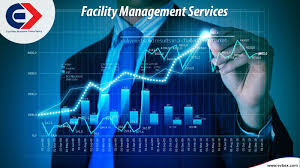
ISO 41001 Facility Management System Simplified
In a three-part series, I will offer a simplified guide that all organizations* can easily follow on their journey towards an ISO 41001 based Facility Management System accreditation.
In my experience as a consultant and in working with my learned colleagues on the ISO Technical Committee 267 (the committee responsible for developing the ISO FM standards), chaired by Stan Mitchell and supported by a number of other global FM experts, it appears that organizations fall into two camps: those from perhaps a more mature FM region or sector, and those from a developing or frontier FM region or sector. For those that are in the former, many appear to be sitting back currently, waiting to see what the take-up rate of the standard is. If the market dictates that organizations are taking to the standard for good reason, then they will be sure to follow suit.
ISO 41001
The general belief and considered opinions are, ‘we are accredited to ISO 9001, ISO 14001, ISO 45001 and/or ISO 55001 so we probably don’t need it right now’. In the developing and frontier regions and sectors, however, ISO 41001 is perceived as a gift from above, a way of quickly playing catch-up with the more mature global regions and as a means to closing the maturity gap in far less time than it would otherwise take. I know that this is currently happening as we speak. Having been an integral part of the ISO 41000 team, responsible for developing the current suite of FM standards for a number of years before the launch of ISO 41001, my message, would be to forget everything else you may have in place, this is a game-changer, in the FM world, get on the journey towards ISO 41001 certification as a priority. Whilst I will provide compelling reasons for doing this in Part 2, I will now focus on the early stages of an ISO 41001 based Management System requirements.
The ISO 41001 journey starts with an ISO ‘41001 Preparedness Audit’. This process will review organizations current FM business approaches and as a key outcome will identify the gaps between current FM organizational approaches against the specific requirements of the standard.
Outputs of the ISO 41001 Preparedness Audit’ will also launch the journey’s baseline and a number of important aspects, namely:
- Gaps between current FM business approaches and practices
- Policies, guiding principles, processes, procedures, and other documents that are required
- A SMART plan and realistic implementation programme
- Identify resources, including expertise and knowledge required for implementation
Compliance with ISO 41001 requires a number of initial overarching requirements that need to be identified within the business and developed accordingly. Experience suggests that these documented requirements do not usually exist within most organizations as a matter of course.
Facility Management System
If we consider the ISO 41001 journey, starting from the baseline preparedness audit, we can also consider the way we plan our approach accordingly against the sections of the standard i.e. the planning journey should start at Section 4, Context of the organization and work through to Section 10, Improvement, of the standard. Perhaps this is obvious to state, but there is a rational reason for following the logical sections of the standard, rather than picking off the perceived low hanging fruit/easy initial wins. This is also why I refer to it as a ‘journey’. FM business approaches developed at the start will undoubtedly and inevitably inform the middle and later stages of the standard, and of course Facility Management System Standard — FMS. It will save you time and is a logical and well-considered path to follow.
During the early planning stages of an ISO 41001 based Management System, the following are the overarching primary terms of reference to the initial stages. These shall be carefully identified and documented:
- FM Policy
- FM Strategy
- Service Level Agreement or Charter (between the FM function and the core business)
- Interested Parties Register (informative and collaborative stakeholder matrix)
The above resultant documents will also take a longer time to develop and finalise than other sections of the standard. This is due to the fact that collaborative engagement with the business will be required in order to develop and reach agreement enabling suitable policy and strategy to be developed which reflects and aligns with business goals and needs.
The accomplishment of the above-documented information will set you on your way towards the remainder of the ISO 41001 FMS journey. As with anything, quality time and spent at the start will pay dividends at the end.

























